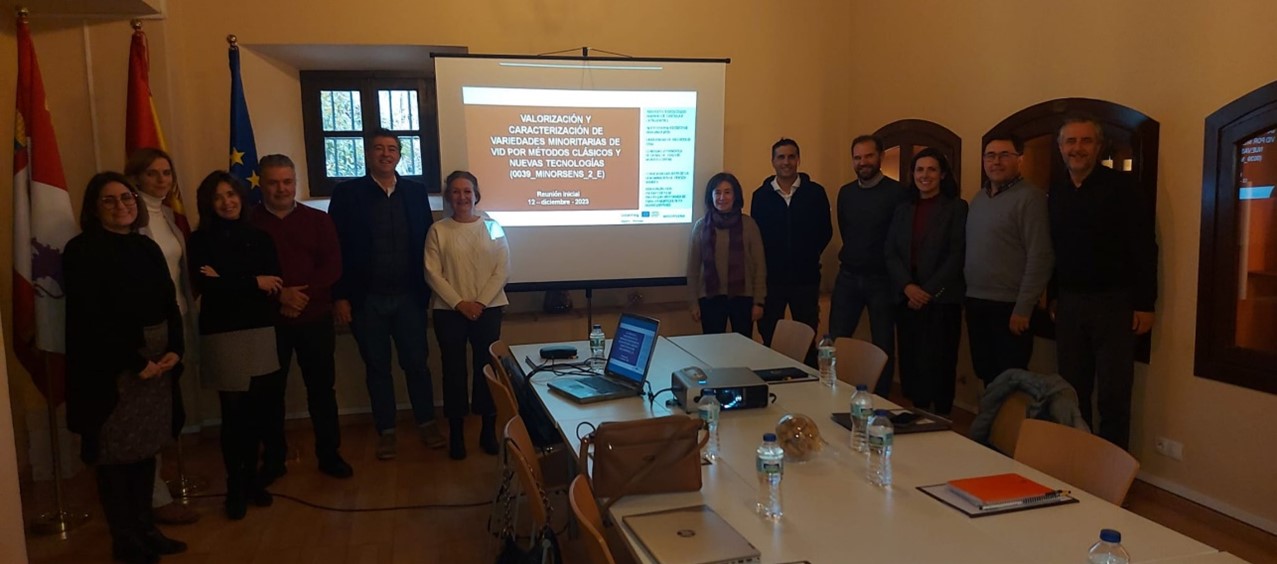Starting of MINORSENS project with a kick-off meeting!
On December 12th, the organizations behind the MINORSENS project met at the Rueda Wine Station (Valladolid, Spain) to launch their activities. MINORSENS was approved at the end of 2023 as part of the third call for projects under the Interreg VI-A Spain-Portugal (POCTEP) 2021-2027 program. The project will last until September 2026 and its goal is to promote and characterize minority grape varieties in the cross-border area, using both traditional methods and innovative technologies. At this first meeting, the main six main activities included in the project and the foreseen milestones were introduced. In addition, we stablished the working groups and action plan to implement this innovative initiative.

We are MINORSENS
The MINORSENS team consist of four beneficiaries and two unfunded partners on both sides of the Spanish-Portuguese border. The project coordinator is the Agrarian Technological Institute of Castilla y León (Spain). This public entity, dependent on the Regional Government of Castilla y León, has among its main objectives the promotion of technological development and applied research in the agricultural sector. The Polytechnic Institute of Braganza (Portugal) is specialized in monitoring fermentation processes and assessing wine quality using electrochemical and NIR techniques coupled with multivariate statistical analysis techniques. The University of Valladolid (Spain) participates in the project through the UVaSens research group, which works on the preparation and characterization of nanostructured films and in their application as gas or liquid sensors. Furthermore, MINORSENS is supported by the Regional Wine Commission of Trás-os-Montes (Portugal), with large experience in the wine sector, ranging from production to winemaking, certification and marketing. APPITAD, the association of producers in integrated protection of Trás-os-Montes and Alto Douro (Portugal), and the Arribes Protected Designation of Origin (Spain), collaborate as unfunded partners to support and advise wineries and winegrowers in their respective working areas. All these organizations form a highly qualified and motivated multidisciplinary group trying to guarantee that these endangered grape varieties receive the recognition and protection they deserve.
MINORSENS in brief
With this initiative, we aim to preserve autochthonous grape varieties from the border region between Spain (Castilla and León) and northern Portugal, which are in danger of extinction due to the use of a few commercial varieties that monopolize production. As we will see, their use will be key to face the climate change. Minority varieties were falling into disuse because they often failed to complete their vegetative cycle properly. However, with the rise in summer temperatures (with strong and frequent heat waves) and the decrease in rainfall, it has been proven that these varieties complete their cycle with very good and balanced ripening rates. Therefore, we are at risk of losing highly adapted grape varieties from which unique, high-quality wines are obtained that can contribute to the economic growth of the area. This is where the importance of MINORSENS lies, highlighting these varieties so they can be appreciated by winegrowers, winemakers and the end consumer.